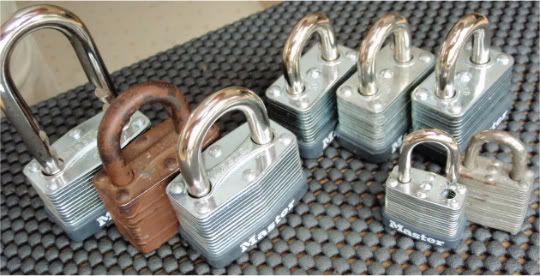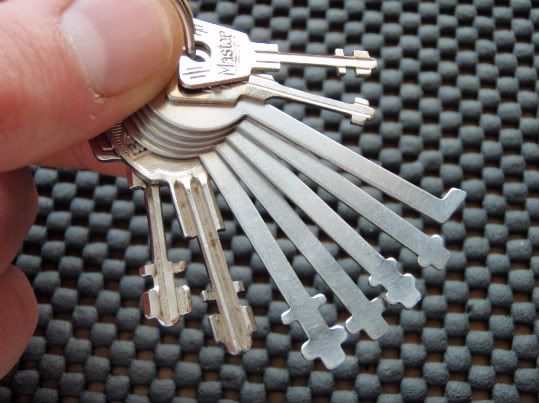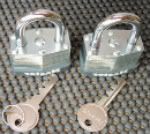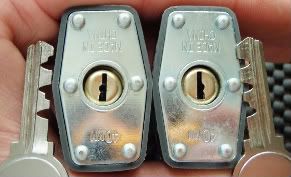Thanks for the nice guide Illusion. Some people may think these locks are to simplistic to mess with, but that's all the more reason to take some time to get familiar with them (and it doesn't take long). They're inexpensive and hold up well over time. Obviously, you wouldn't want anything too important behind the doors these padlocks are placed on, but they do serve their purpose. Lets face it, when most people look at a lock... they see a lock - mission accomplished.
For what it's worth, here's my small collection of warded padlocks and some skeleton keys.

These are all Masters. From left - right: A 510 (removable hasp), a 370, and a 500. The three in the upper-right are all 22's. The two smaller ones are 10's. The keyways are a kind of zig-zag pattern. Notice that some of them are in the opposite direction. I guess you could say that some zig, while other zag (I know I'm using some pretty technical terms here so try n' stay with me now

). Just another way to lessen the odds of a key working in more than one lock.


The two keys on the left that I filed down will open all of these locks (minus the two small #10's). I made one "zig" key and one "zag" key to pass both keyways. The five flat picks are a set I purchased years ago, but it's really not necessary to spend any money on these. If you were to make one of the L-shaped picks and file down two keys like I've done, I'd imagine that'd be sufficient for the vast majority of these locks. Master also produces these warded padlocks.


The keyways are different, but again, opposite directions to limit the use of unauthorized keys. They use a one-sided key that also could be cut down for a skeleton. You'd have to either grind it thin enough to pass the ward, or make two (one for each direction). The L-shape key will open these, but you need to activate two different components in two different spots- one on either side of the last ward. In other words, the deepest two spaces. I find it seems to work best when the second to the last space is done first, then turn the pick in the last one (deepest in the lock) to open the lock. Sometimes you may need to work both spaces more than once, jumping back and forth between the two while pulling on the hasp. Experiment for a for a few minutes and you'll have it down in no time.
